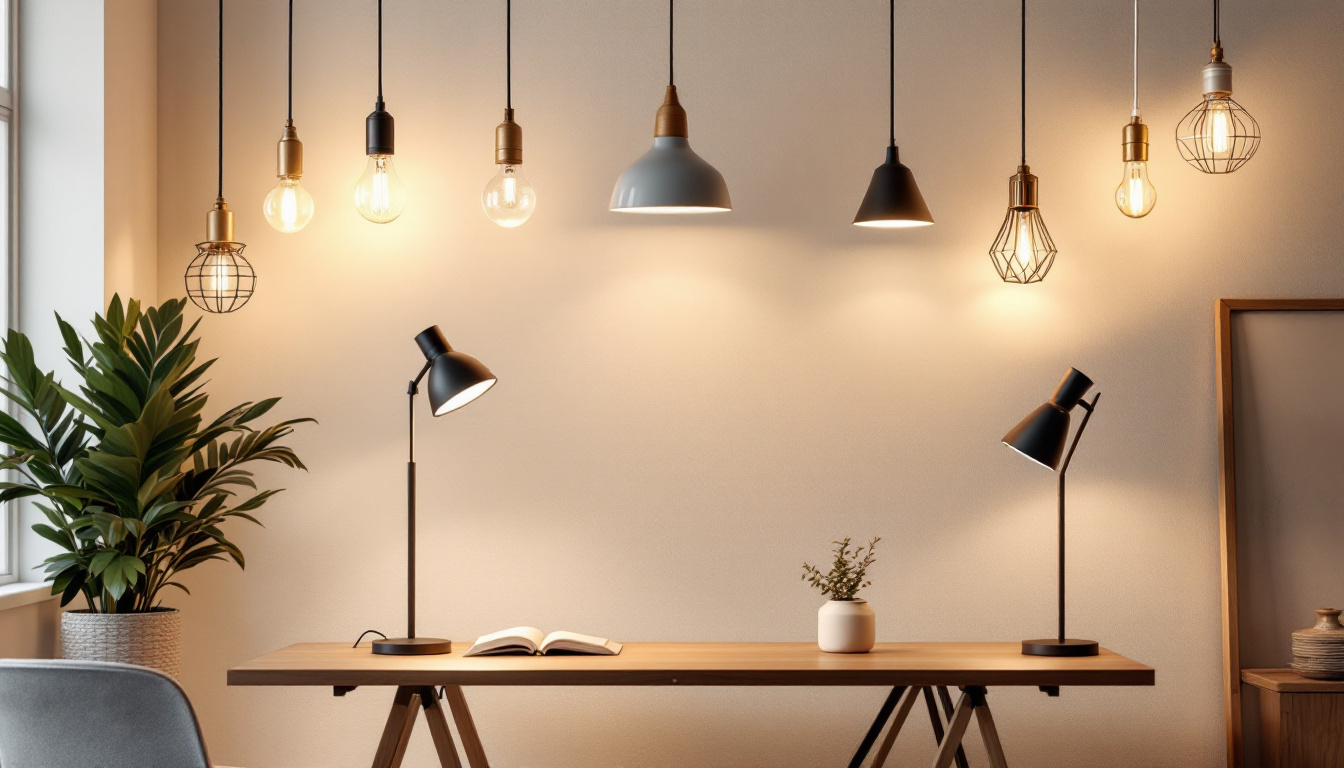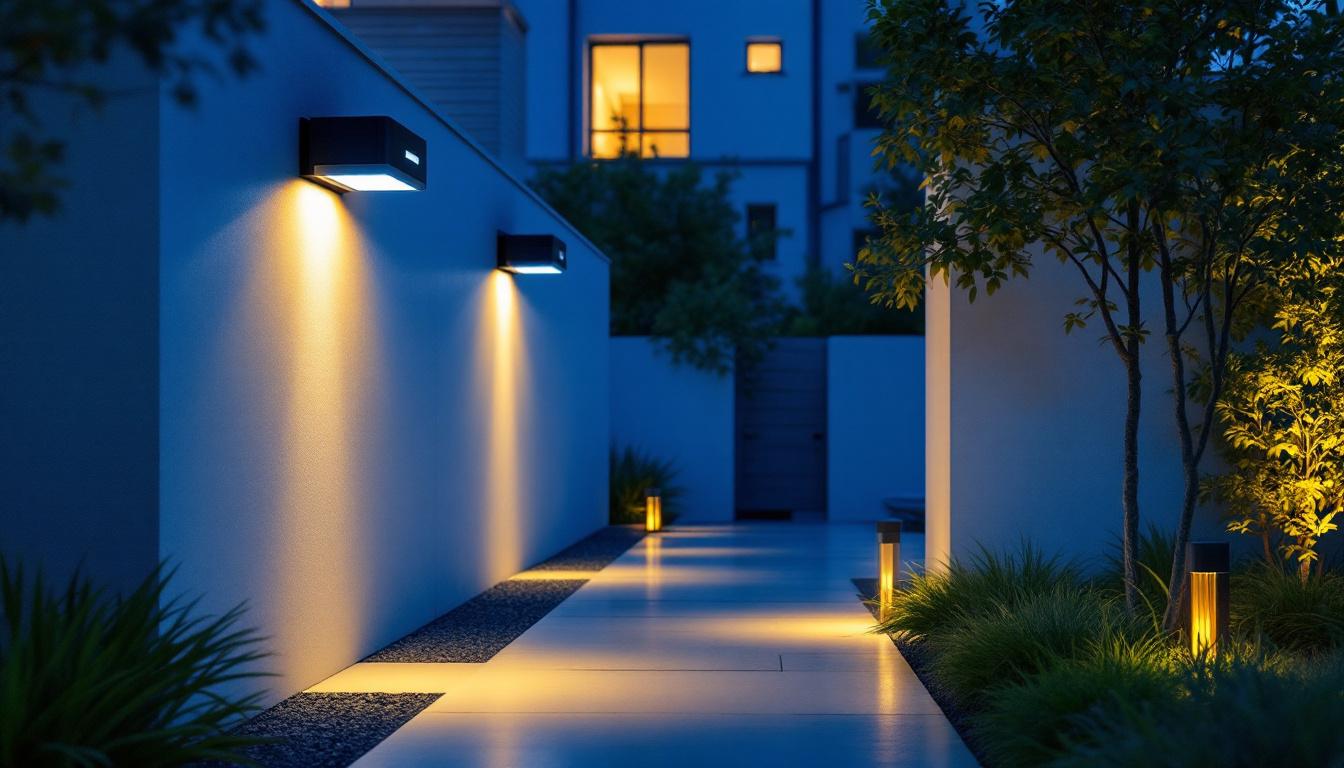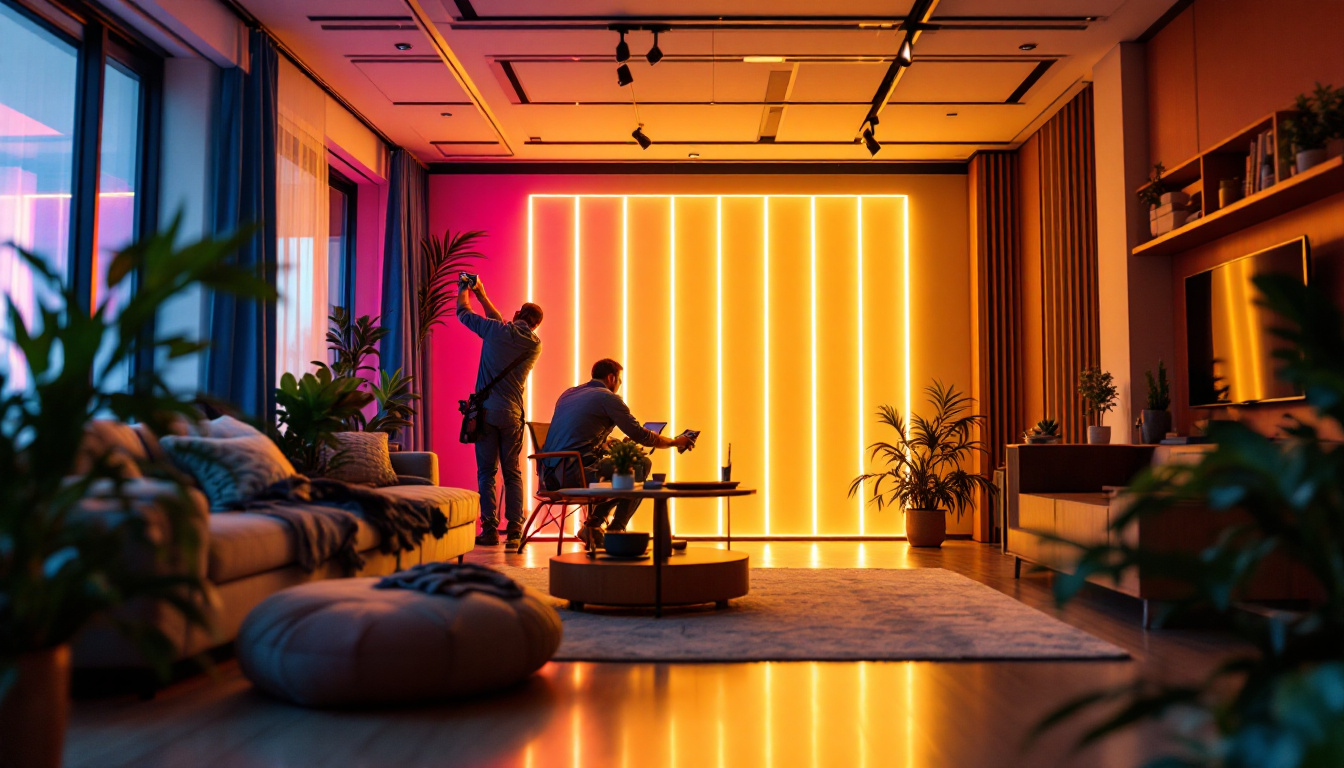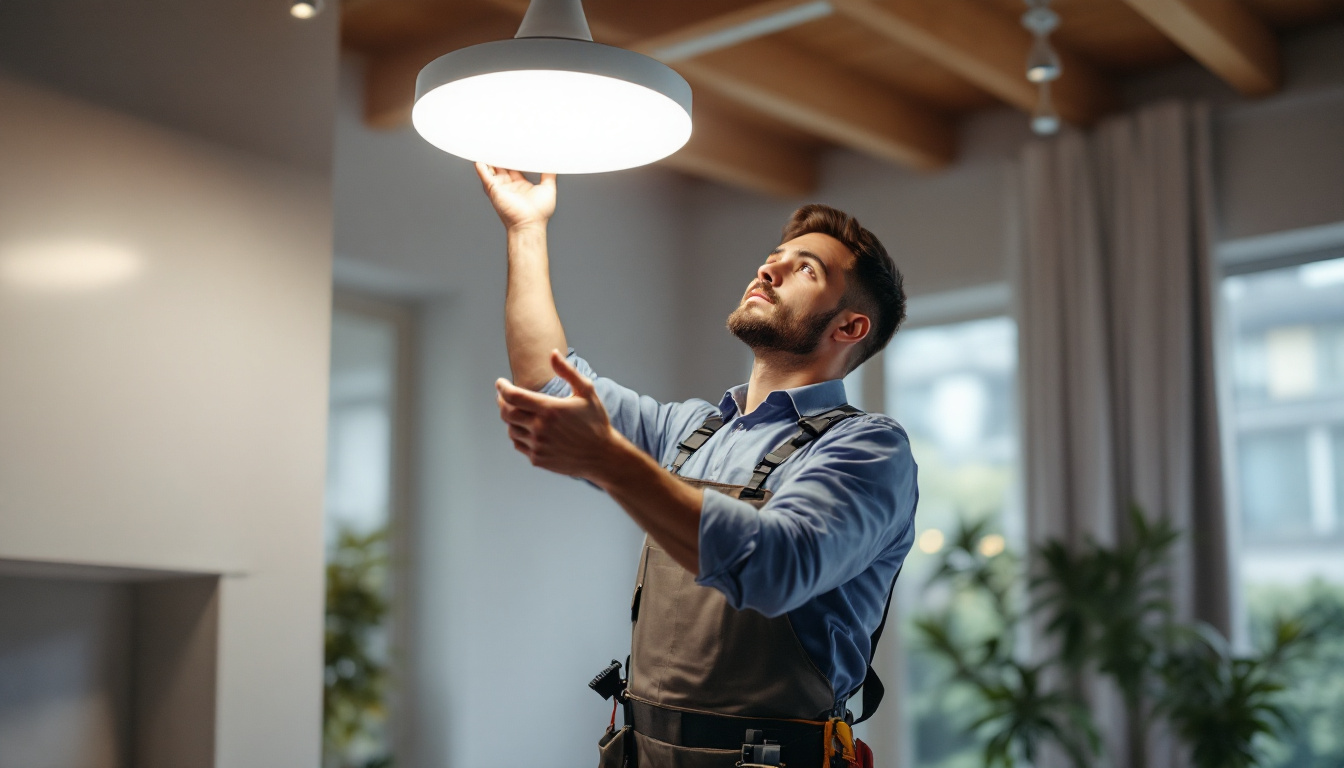
Lighting contractors play a crucial role in the design and installation of effective lighting systems. As experts in their field, they often encounter a variety of questions regarding lamp fixtures. This article addresses some of the most common inquiries, providing insights that can enhance understanding and improve client interactions.
One of the primary questions lighting contractors face is about the different types of lamp fixtures available. Each type serves a specific purpose and can significantly influence the ambiance and functionality of a space.
There are several categories of lamp fixtures, including recessed, pendant, and wall-mounted fixtures. Recessed fixtures are popular for their sleek design, allowing them to blend seamlessly into ceilings. This type of fixture is ideal for modern interiors where a clean, uncluttered look is desired. Pendant fixtures, on the other hand, are often used as statement pieces, providing both illumination and aesthetic appeal. They come in various styles, from industrial to contemporary, and can be hung at different heights to create visual interest. Wall-mounted fixtures can serve as accent lighting or functional task lighting, depending on their placement. Sconces, for example, can highlight artwork or architectural features, while adjustable wall-mounted lamps can provide focused light for reading or other tasks.
Another important aspect of lamp fixtures is energy efficiency. Many contractors are frequently asked about the most energy-efficient options available. LED fixtures have gained popularity due to their longevity and lower energy consumption compared to traditional incandescent bulbs. These fixtures can last up to 25,000 hours, significantly reducing the frequency of replacements and maintenance costs. Contractors should be prepared to discuss the benefits of these fixtures, including their reduced environmental impact and cost savings over time. Furthermore, advancements in smart lighting technology have introduced options that allow users to control brightness and color temperature, further enhancing energy savings while providing customizable lighting solutions. As energy regulations continue to evolve, staying informed about the latest energy-efficient products will not only benefit contractors but also their clients, who are increasingly seeking sustainable solutions for their lighting needs.
Installation can present various challenges, and contractors often receive questions regarding best practices and troubleshooting techniques. Understanding common issues can help streamline the installation process and ensure client satisfaction. Proper planning and preparation are key to overcoming many of these hurdles, allowing for a smoother workflow and a more successful project outcome.
One of the most common challenges during installation is wiring. Contractors may be asked about the best practices for wiring different types of fixtures. It is essential to ensure that the electrical system can support the chosen fixtures, including considerations for voltage and amperage. Additionally, proper grounding and circuit protection are critical to prevent electrical hazards. For instance, using the correct gauge of wire is vital to handle the load without overheating, which could lead to potential fire risks. Moreover, understanding local electrical codes and regulations can help contractors avoid costly mistakes and ensure compliance with safety standards.
Another frequent question revolves around the mounting and placement of fixtures. Contractors should consider the height and angle of fixtures to achieve optimal lighting effects. For instance, pendant lights should be hung at a height that allows for adequate illumination without obstructing views. Similarly, recessed lights should be strategically placed to avoid shadows and ensure even light distribution. Furthermore, it is important to take into account the room’s purpose and design aesthetics when determining fixture placement. In living spaces, a layered lighting approach that combines ambient, task, and accent lighting can enhance the overall atmosphere and functionality. Additionally, using adjustable fixtures or dimmers can provide flexibility, allowing clients to customize their lighting experience based on their needs and preferences.
Maintenance is an essential aspect of any lighting system, and contractors often encounter inquiries about the upkeep of lamp fixtures. Understanding the maintenance requirements can help prolong the life of fixtures and maintain their performance. Proper maintenance not only enhances the aesthetic appeal of the lighting but also contributes to energy efficiency, ensuring that the fixtures operate at their best without unnecessary energy consumption.
Clients frequently ask about the best practices for cleaning and caring for their lamp fixtures. Dust and grime can accumulate over time, diminishing the quality of light produced. Contractors should recommend gentle cleaning solutions and techniques to avoid damaging the finish or components of the fixtures. Regular maintenance schedules can also be suggested to keep fixtures in optimal condition. For instance, using microfiber cloths can effectively remove dust without scratching surfaces, while a mixture of vinegar and water can serve as a natural cleaner for glass components. Additionally, educating clients about the importance of checking for cobwebs or insects that can obstruct light output can further enhance the effectiveness of their lighting systems.
Another common maintenance question involves replacing bulbs and other components. Contractors should be knowledgeable about the types of bulbs compatible with various fixtures, as well as how to safely replace them. Providing clients with information on the lifespan of different bulbs can also help them anticipate when replacements will be necessary. Furthermore, discussing the benefits of energy-efficient bulbs, such as LEDs, can lead to long-term savings on energy bills and reduced environmental impact. Clients may also appreciate guidance on how to properly dispose of old bulbs, especially those containing hazardous materials like mercury, to ensure compliance with local regulations and promote eco-friendly practices.
Design is a critical factor in lighting projects, and contractors often receive questions about how to choose the right fixtures for specific applications. Understanding design principles can help contractors provide valuable recommendations to their clients.
Clients may inquire about the best fixture styles to complement their interior design. Contractors should be familiar with various design aesthetics, from modern and minimalist to traditional and ornate. Understanding the overall theme of a space can guide fixture selection, ensuring that lighting enhances rather than detracts from the design.
Another important design consideration is color temperature. Clients often ask about the difference between warm and cool light, and how these temperatures affect the mood of a space. Contractors should be prepared to explain the concept of color temperature and recommend fixtures that provide the desired ambiance. Additionally, discussing the quality of light, including factors like CRI (Color Rendering Index), can help clients make informed decisions.
Budgeting is a significant concern for many clients, and contractors frequently receive questions about the costs associated with lamp fixtures. Providing clear and accurate information can help clients plan their projects effectively.
Clients often want to know the price range for different types of fixtures. Contractors should be able to provide estimates based on the variety of options available, from budget-friendly choices to high-end designer fixtures. It’s important to discuss the trade-offs between price and quality, emphasizing that investing in quality fixtures can lead to long-term savings in energy costs and maintenance.
In addition to the cost of the fixtures themselves, clients may inquire about installation costs. Contractors should be transparent about their pricing structure, including any additional fees for complex installations or modifications to existing electrical systems. Providing a detailed breakdown can help clients understand the value of professional installation.
The lighting industry is continually evolving, and contractors often encounter questions about the latest trends in lamp fixtures. Staying informed about these trends can enhance a contractor’s credibility and provide clients with innovative solutions.
One of the most significant trends in recent years is the rise of smart lighting solutions. Clients may ask about integrating smart technology into their lighting systems. Contractors should be knowledgeable about various smart fixtures and controls, including options for remote operation and automation. Discussing the benefits of smart lighting, such as energy savings and convenience, can help clients see the value in these modern solutions.
As sustainability becomes a priority for many consumers, eco-friendly lighting options are gaining traction. Contractors should be prepared to discuss the benefits of using sustainable materials and energy-efficient technologies. Providing information about certifications, such as ENERGY STAR, can help clients make environmentally conscious choices.
Safety is paramount in any lighting installation, and contractors often receive questions about potential hazards associated with lamp fixtures. Understanding these concerns can help contractors ensure compliance with safety standards and regulations.
Clients frequently inquire about electrical safety when it comes to lamp fixtures. Contractors should be well-versed in the National Electrical Code (NEC) and other relevant regulations. Discussing the importance of hiring licensed electricians for installations can help clients understand the risks associated with improper wiring and installation.
Another safety concern relates to heat generation and the potential for fire hazards. Contractors should educate clients about the heat output of different types of fixtures and the importance of proper ventilation. Providing guidelines for fixture placement, especially in areas with flammable materials, can help mitigate these risks.
Lighting contractors play a vital role in helping clients navigate the complexities of lamp fixtures. By addressing common questions and concerns, contractors can enhance their expertise and build trust with their clients. Understanding the various types of fixtures, installation challenges, maintenance needs, design considerations, budgeting, trends, and safety concerns can empower contractors to provide exceptional service and create well-lit, functional spaces.
Ready to elevate your lighting projects with premium fixtures that combine quality, efficiency, and style? Look no further than LumenWholesale. Our extensive selection of spec-grade lighting products ensures that you can meet any design challenge and exceed client expectations. With unbeatable wholesale prices and the convenience of free shipping on bulk orders, LumenWholesale is your go-to source for lighting solutions that don’t compromise on quality or value. Take the next step in creating well-lit, functional spaces and explore our collection for Wholesale Lighting at the Best Value today.

Discover the latest advancements in motion detector LED lights for outdoor use and why staying informed is crucial for lighting contractors.

Discover how lighting strips can transform profitability in lighting installations.

Explore the fascinating science of island lighting and its impact on design and functionality.

Discover essential insights and practical tips for lighting contractors on utilizing UFO LED lights.